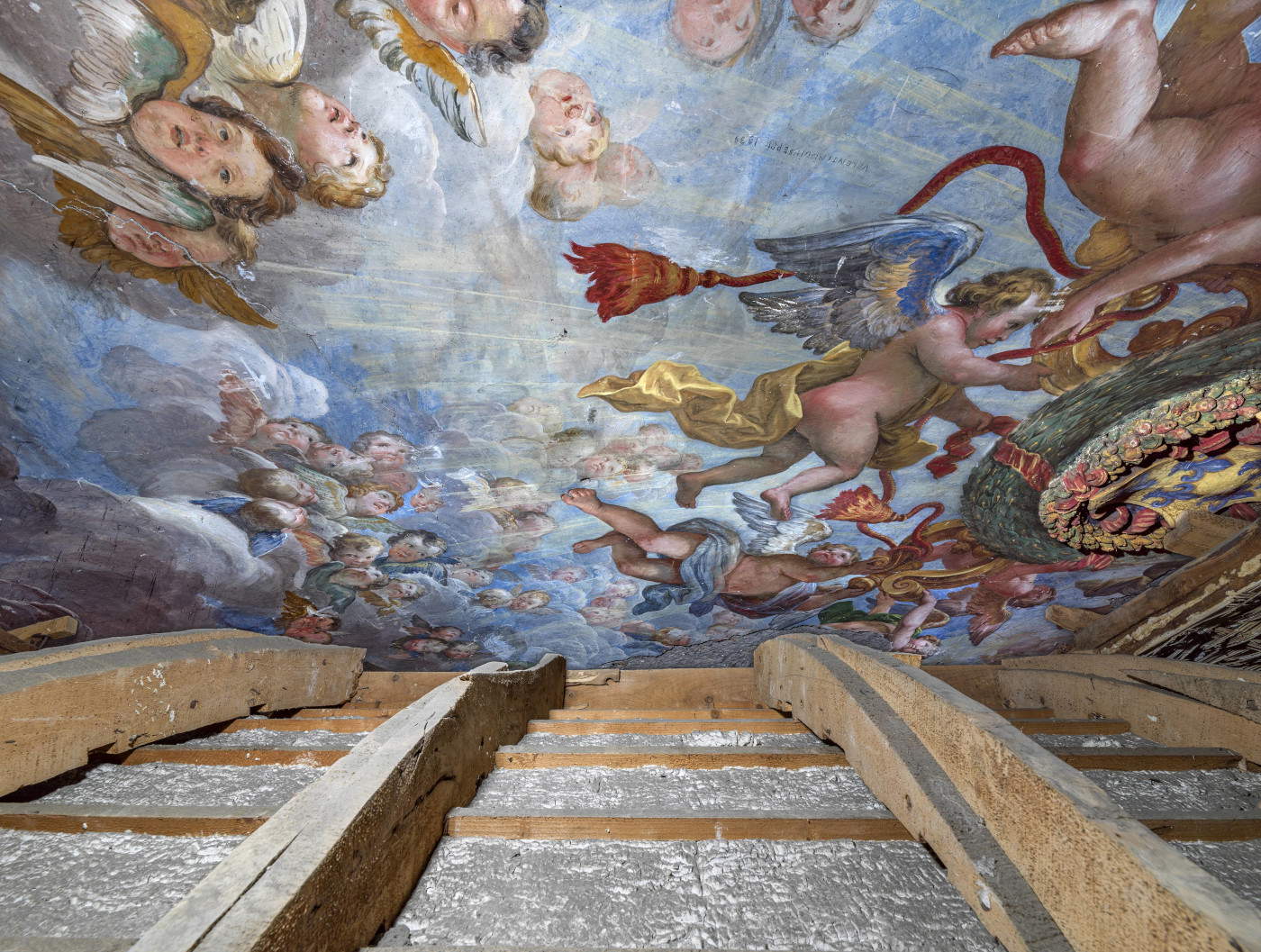An exhibition at Villa Farnesina recounts new discoveries about its 17th-century decoration
From Nov. 6, 2024, to Jan. 12, 2025, Villa Farnesina in Rome presents the exhibition Il Seicento in Villa Farnesina, curated by Alessandro Zuccari and Virginia Lapenta, under the patronage of the Associazione Amici dell’Accademia dei Lincei, in collaboration with the École Française de Rome as part of its 150th anniversary celebrations and the Parco Archeologico del Colosseo.
The exhibition aims to recount the new discoveries related to the seventeenth-century decoration of the Farnesina and to delve into the seventeenth-century outcomes of the works created by Urbino in the Villa Farnesina, as well as the fortunes of the iconographic subjects he conceived. The previously unseen frescoes from the villa’s ancient living room, found above the 19th-century vault that hides them, will be shown. This is a decorative portion from the Farnese period, consisting of a sky with flying putti around the Farnese coat of arms in the center of the vault, two putti on a blue background in the corbels, and a landscape in autumnal colors adorning the only visible lunette.
Through digital technologies and Luigi Spina’s photographic campaign, the 17th-century frescoes, dating from the Farnese period (from 1579), that decorated the villa’s former Chigiano living room will be presented. The three-dimensional reconstruction shows the sequence of the various transformations of the living room with the intention of restoring an image of the environment and its original decoration.
Between 1861 and 1863 major restoration work was carried out on the Villa Farnesina, particularly on the first floor, which had been radically altered from the 16th-century configuration designed by Baldassarre Peruzzi for Agostino Chigi. Architect Antonio Sarti found serious structural damage due to the load on the walls above the vaults and proposed consolidation works. The main hall was divided into two parts, distorting the original spatiality and adding new service rooms, including an elevator shaft.
The discovery of the frescoes, which were spared by the insertion of the elevator, constitutes a significant novelty for the knowledge of the building and its seventeenth-century decorative phase, obtained as part of the conservation and restoration activities carried out by the Accademia Nazionale dei Lincei in collaboration with the National Institute of Geophysics and Volcanology. This discovery and new studies devoted to the Farnese period of the Villa also provide an opportunity to explore the influence of Raphael’s style in seventeenth-century Rome. To this end, the exhibition displays for the first time at the Farnesina six important paintings that are inspired by or reproduce the frescoes of Urbino and his collaborators. In the Loggia of Cupid and Psyche will be two Allegories of Farnese commission attributed to Antonio Carracci (belonging to the Capodimonte Museum, now housed in the Chamber of Deputies) that rework in a religious key two spandrels executed by Giulio Romano and a Hercules with the club by Sassoferrato (from a private collection) modeled on a figure of Jupiter painted in the same loggia. On display in the Loggia of Galatea will be Pietro da Cortona’s Galatea granted by the Academy of St. Luke, Andrea Sacchi’s Galatea preserved in Palazzo Altieri (ABI), and a 17th-century copy of Galatea from the École Française de Rome.
The exhibition is dedicated to Lyncean Professor Natalino Irti, who offered his generous contribution to the restoration work in some of the rooms of the Villa Farnesina, financing the recovery and enhancement of the seventeenth-century decoration.
Photo ©luigispina
 |
| An exhibition at Villa Farnesina recounts new discoveries about its 17th-century decoration |
Warning: the translation into English of the original Italian article was created using automatic tools. We undertake to review all articles, but we do not guarantee the total absence of inaccuracies in the translation due to the program. You can find the original by clicking on the ITA button. If you find any mistake,please contact us.



























